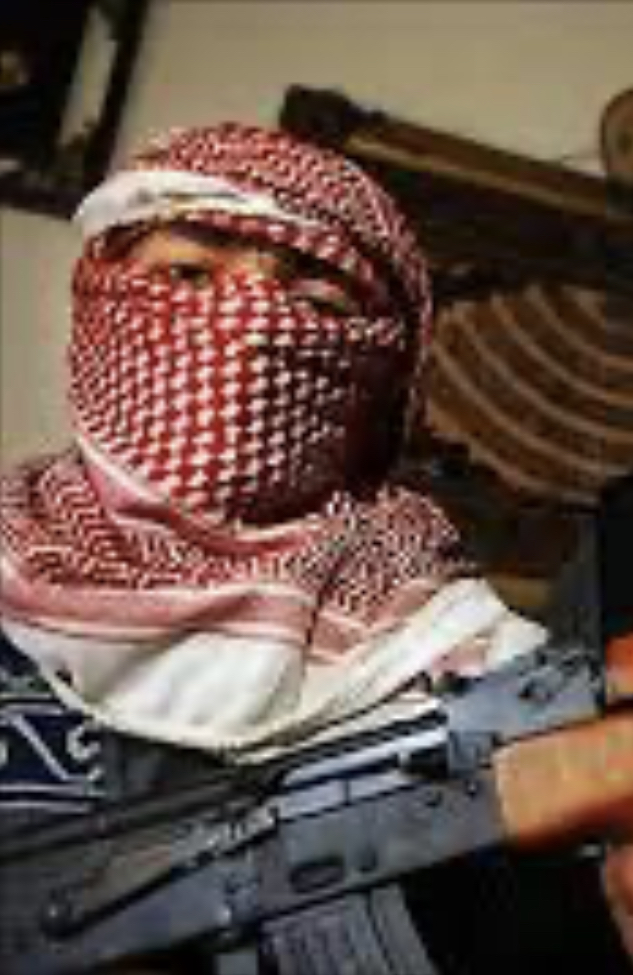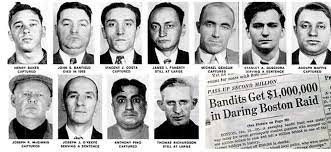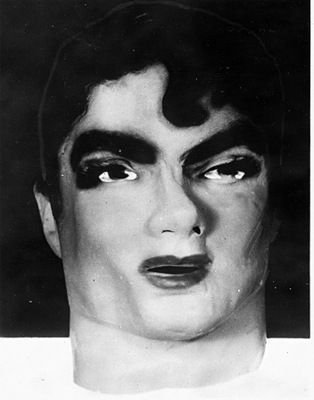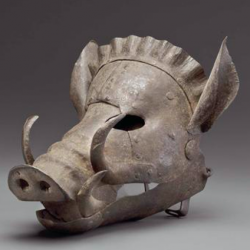Rarely does anyone ever see masked criminals being involved in murder, a mass heist or some other highly punishable form of activity. However, some have seen it in the past, within their own lifetimes or their ancestor’s lifetimes.
The KKK
The Ku Klux Klan, or the KKK, are depicted wearing their signature long white cloaks that stretch down to their feet, and pointy cone hoods with eye-holes cut out of them.


This group of people terrorized, tortured and lynched mainly African American and Black Americans since the mid-19th century. They usually carried out their attacks at night, so rather than dressing in black robes to signify the death of something, wearing all white might have lit up their existence or arrival to their victims or targets while enlightening their ultimate goal in the reestablishment of white supremacy through the use of Democratic victories according to the History Channel. They made this especially easy to do because they had members of the KKK in Congress, authorizing them legislative power over certain issues that favored them.
al-Qaeda (ISIS) & November 11, 2001
Another group that infamously terrorized others through the use of disguise and slipping through the cracks of the American airline security system were the Arabic terrorists, hijackers responsible for the attack on the Twin Towers or World Trade Center back on September 11, 2001.
According to passengers on the plane and in referencing official governmental documents from the FBI, the hijackers were affiliated with the terrorist organization named al-Qaeda. Affiliated with I.S.I.S. They wore red and white checkered headbands and bandanas and carried knives allowing them to force their way into the cockpits of U.S. airlines, eventually colliding with the towers in New York City.
While the color red could mean or affiliate with their terrorist organization, there might be other reasons behind their mask choices, or just an easy and convenient way to cover up their faces. Referring back to the COVID-19 pandemic, at the beginning citizens of each country would use what they had on hand to cover their faces; including bandanas and ski masks which are also linked to criminality. Convenience is a big factor when it comes to hiding your face, quickly.

The very common misconception after the attack on New York, as well as the Pentagon and other major governmental buildings, is that people who look like those depicted in the picture above are all linked to the same terrorist organization because they have the same appearance as them. If someone of that religious belief, region, ethnicity or nationality are wearing similar articles of clothing does not automatically affiliate with those who purposefully terrorized The United States of America.
If a woman is wearing a hijab, for example, does not mean that she is going to terrorize or harm someone or something. It is part of their religion and part of their identity. Again with the Semiotics of Identity, others may perceive how they want to perceive others with whom wear masks. But the wearer has an intention of their own, whether good, bad, normal, or part of their every day lives. For example, a child in a hospital with an autoimmune disorder has to live in a bubble with a mask on all the time. Her intention is to not get sick. Her intention is to keep others safe from her and her safe from others. She is not actively trying to commit a crime and shouldn’t be placed inside a stereotype because she has to wear a mask each day of her life. Maybe one day if she heals, she can take off the mask. The same goes for Arabic women once they are wed. But then again, it is within their choice to wear their hijab or not based on how strongly their religious beliefs, societal standings and marital position is within her own life.
But then again, there is good versus evil here just like in the comic books. While al-Qaeda (I.S.I.S) made an attempt to break the U.S., the men and women of the health and protection services (i.e. nurses, doctors, firefighters, policemen and policewomen, etc) were wearing their masks to aid New York in their time of need.
As hopeful as that last sentence sounded, the KKK and al-Qaeda caused a lot of harm during their times in the spotlight, yet no-one was able to damask or uncover immediately who they actually were; no-one proved their identities. By the time they escaped the clutches of the American government and its people, they would have already gotten away with what they wanted in the first place.
The Brink’s Robbery
Another real life event dealing with mask usage during a criminal moment in time was the infamous Brink’s Robbery in Boston, Massachusetts in 1950. According to information from official FBI records on their governmental website, the history of the Brink’s Robbery is considered the “perfect crime” due to each robber’s specific skill sets and their accomplishments in getting away for six years after the initial robbery.
With five to seven men entering 165 Prince Street on January 17, 1950, ultimately resulting in burlap sacks filled with $1.3 million dollars in cash and $1.5 million in checks, money orders and other securities. Overall, they made out with over two million dollars.
However, after those six years, O’Keefe finally confessed and gave up all the information on this successful mass heist. He gave up the premeditated plans, the blueprints for the bank, their disguises and the other men involved in creating this master plan for over two million dollars.
Six of this criminal gang including Baker, Costa, Geagan, Maffie, McGinnis, and Pino (who was the brain of the whole operation), were all arrested and held in lieu of bails for one-hundred thousand dollars a piece. O’Keefe and Gusciora were already in prison for other charges against them and Banfield had passed away. Two other robbers, Faherty and Richardson, fled to avoid apprehension and were placed on the “Ten Most Wanted Fugitives” list which was an impressive list to gain access to. However, their runaway plan only lasted a few months. The FBI found them in an apartment in Massachusetts, which was dumb of them to stay in the same place they stole millions of dollars from. But that’s just a personal opinion.
After everyone involved was put behind bars and placed in a courtroom, finally on October 9, 1956, the jury slammed down his gavel and exclaimed all were guilty of the Brink’s Robbery. The eight men remaining had received life sentences for robbery, two year sentences for conspiracy to steal, and sentences of eight to ten years for breaking and entering at night.

However, McGinnis who was not at the scene of the crime that night, received a life sentence on each of the eight indictments which charged him with being an accessory before the fact in connection with the Brink’s Robbery.
After everyone had been convicted, after years of running and hiding from the laws in which they broke under their hidden faces in the dead of night, they money that they stole had been dispersed by others in other states such as Baltimore. Counterfit money had also been printed off of what they had stolen in the first place. But it is a mystery to this day where the rest of that two million dollars is. The majority of it had not been recovered since they had all been convicted.
So the main question is, where is the money? Do you think it’s still around today? I can honestly imagine some sort of booty for criminals looking to cause some trouble.
As for the actual fashion aspect of the Brink’s Robber’s disguise and mask usage. All robbers,
“Wore Navy-type peacoat, gloves and chauffeur’s caps. Each robber’s face was concealed behind a Halloween type mask. To muffle their footsteps, one of the gang wore crepe-soled shoes, and others wore rubbers.”
The FBI
The robbers were also given pistols before entering the bank. Not only were the masks useful in the way that they protected their identities, but they were also used in a manner that benefited them in the stealthiness of their operation. I guess you could also consider the dark of night being another form of mask usage and stealth; they covered themselves pretty impressively. The Halloween-type mask depicted below is supposedly that of Captain Marvel from the Marvel Universe; from older comic book versions of the character. Personally, I see more of DC’s version of Wonder Woman from the older comic books, but I guess people can visualize this mask as a different character either way.

This sort of cheap, rubber material used in Halloween masks have been depicted and used in several movies and television shows as depicted above. Halloween-type masks, in general, have been seen disguising villains and real life criminals because it’s what’s available to them without looking or seeming suspicious. Who knows, maybe they could have been going to a costume party! But even then, masks from the horror movies are terrifying, so the threat of someone holding you at gun or knifepoint and restraining you while wearing a creepy mask like this to protect them from their identities is still horrifying.
Oh! Remember how ideas have to come from somewhere mentioned in my previous blog post titled, Familiar Masked Creatures? Well, the Brink’s Robbery in 1950 inspired director William Friedkin to make a movie based on the events that took place on January 7, 1950 in Boston Massachusetts. The movie was released on December 8, 1978; based on the real events of this infamous, perfect crime.

The Wrap Up
In the past, previous countries have made an effort or spoken of banning the use of masks for criminality prevention. The criminalization of the Burkina in France, for instance, gave them cause to argue,
“That burins should not be worn because of public security reasons legitimacy, for the same line of logic should outlaw any article of clothing that hinders proper identification.”
Jung, 2016
Which makes sense in terms of criminality, crime rates, and mask usage. If someone is covering up their face not due to specific and understandable reasoning, such as medical or employment excuses, then why are they even wearing one in the first place?
Profiling someone based on the types of accessories and clothing is one thing when it comes to judging someone on the street, but it’s easier to do so for people who have no reason to wear things that mask their identity. It is suspicious and uncauseworthy.
However, those who want to wear a mask or any article of clothing they want, they can. They have the free will do do as they please, and even if they’re told not to do something, do you really believe criminals who cannot follow society’s laws, will follow not wearing a mask to cover up their identities? Very unlikely.
References:
Jung, C. (2016). CRIMINALIZATION OF THE BURKINI. Harvard International Review, 38(1), 6-7. Retrieved April 16, 2021, from http://www.jstor.org/stable/26445655
Pollock, D. (1995). Masks and the Semiotics of Identity. The Journal of the Royal Anthropological Institute, 1(3), 581-597. doi:10.2307/3034576
Sources:
- https://www.history.com/topics/reconstruction/ku-klux-klan
- https://www.fbi.gov/history/famous-cases/brinks-robbery
- https://www.wcvb.com/article/historical-photos-boston-s-great-brinks-robbery/8118545
- https://jamestown.org/program/al-qaeda-in-iraq-operations-suggest-rising-confidence-ahead-of-u-s-military-withdrawl/
- https://www.theguardian.com/world/2018/mar/05/ku-klux-klan-kkk-media-debate
- https://wikipedia.com
- https://www.wnyheritage.org/content/buffalo_takes_on_the_ku_klux_klan/index.html
- https://www.flyingtigerantiques.com/1920s-ku-klux-klan-member-photo-from-buffalo-ny-area.html
